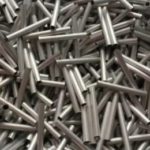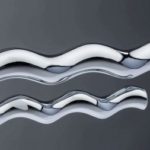
Decorative nickel plating
Nickel plating is a thin-layer application process in which a layer of nickel is deposited electrolytically (usually iron, steel, or copper). The layer can be purely decorative or applied for the purpose of corrosion protection.
Nickel plating produces hard, uniform and non-porous coatings that are resistant to corrosion in humid atmospheres, water and alkaline solutions, and relatively stable in hydrochloric and sulfuric acids.
Automatic line for shiny nickel plating (tinning/coppering) in drums and hangers
Glossy tin (reflective and flat layer, allows white deposits that do not turn yellow over time, application thickness requirements range from 3-20 μm)
Glossy nickel plating (excellent ductility of layers, unchanged leveling and gloss properties over time, application thickness requirements up to 30 μm)
Acid copper coating (allows coatings that are shiny, smooth, and without internal tension)
The basic materials that are protected on this line are copper, brass and aluminum.
- Automatic line for shiny nickel plating on racks on steel
- Glossy nickel plating (excellent ductility of the layers, unchanged leveling and gloss properties over time, coating thickness up to 30 μm)
- Chrome plating (a thin layer of chromium up to 0.5 μm protects the nickel from oxidation and tarnishing, while providing a light bluish tint with a mirror effect)

Services
- Hard chrome plating
- Zinc phosphating
- Cataphoretic lacquering of elements (KTL)
- Tinn plating
- Brass plating
- Silver plating
- Copper plating
- Trivalent chrome plating of elements (Cr III)
- Decorative chrome plating
- Decorative nickel plating
- Zinc Nickel siling
- Zinc nickel on racks
- Zinc nickel in drums
- Galvanizing elements on racks
- Zinc plating in barrels



